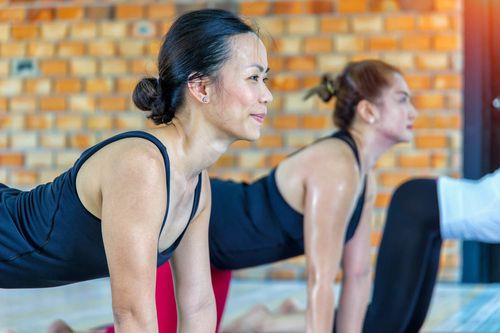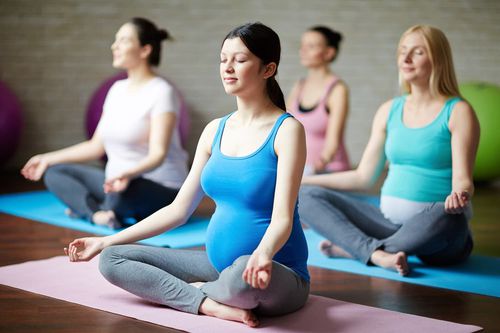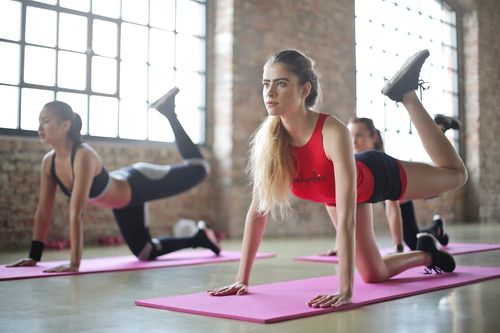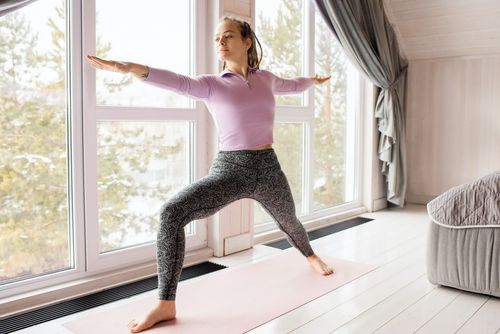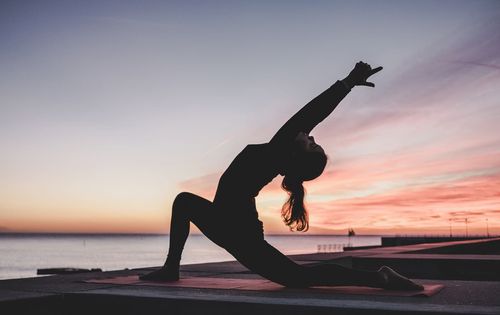What Is Hatha Yoga?
Hatha yoga is the most popular style of yoga and was first introduced in India in the 15th century. The word "Hatha" comes from two Sanskrit words "ha" which means "sun" and "tha" which means moon.
Hatha yoga aims to achieve a balance between the mind and the body through the use of asanas or physical poses, pranayama or breathing techniques, and meditation. Hatha yoga practices are designed to align and calm the mind, the body, and the spirit in preparation for meditation.
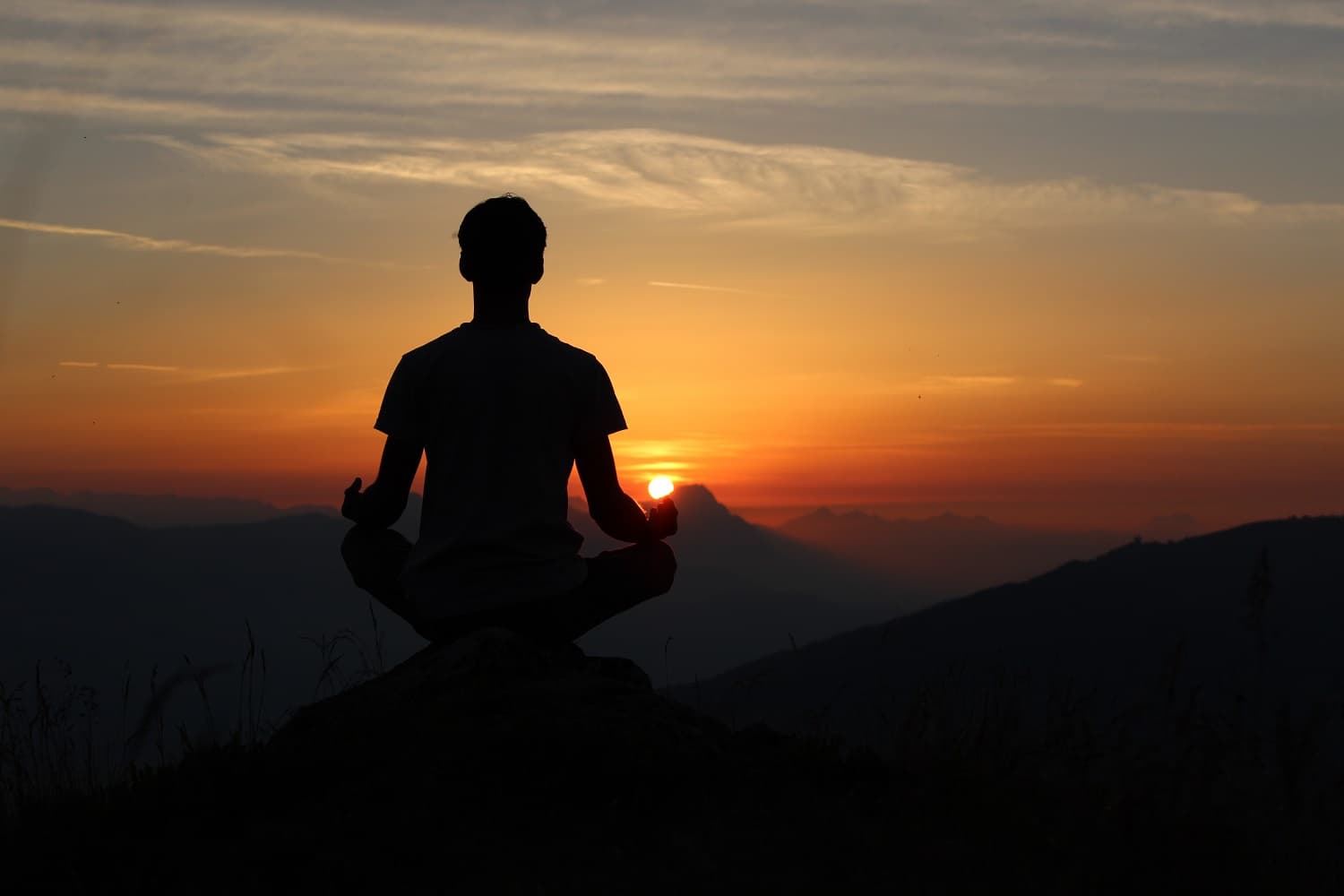
How Does Hatha Yoga Work?
Hatha yoga is ideal for anyone who's never done yoga before as well as yogis who took a break from the practice and want to go back to the basics. This yoga style consists of asanas carried out at a slower pace than those of other yoga practices like Vinyasa and Ashtanga.
The postures in hatha yoga aim to open up the entire body by combining stretching and breathing exercises. One can do several poses, including Child's Pose, Downward Facing Dog, Warrior I and II, Tree Pose, Cobra Pose and Boat Pose. Each pose is held for five counts while the individual connects with their breath, allowing their muscles to ease up and their mind to relax.
What Are the Benefits of Hatha Yoga?
The poses in hatha yoga help open the energy channels of the body, thereby allowing a free spiritual energy flow. Some poses, or asanas, can massage and tone internal organs,
Hatha yoga is a powerful mind-body practice that recognises and realises the hidden physical and mental potential of an individual. Doing it regularly increases flexibility, improves posture and boosts strength. It also promotes relaxation and lowers stress levels. The physical poses and breathing techniques improve the flow of energy through the body's energy channels, which in turn tonify the internal organs and prevent a slew of diseases, including:
- Diabetes
- Hypertension
- Arthritis
- Bronchitis
- Asthma
- Heart disease
- Fibromyalgia
- Carpal tunnel syndrome
- Anxiety
- Depression
- Insomnia
- Muscle tension
- Chronic back pain
- Inflammation
What Are the Most Common Hatha Yoga Poses?
There are several asanas or poses used in Hatha yoga. However, the following asanas are the most commonly used by beginners:
- Tadasana (Mountain Pose) helps improve body posture and reduces back pain. Also, it strengthens the abdominal muscles, hips, thighs and ankles.
- Vrikshasana (Tree Pose) helps stretch the shoulders, thighs and groin. It also tones the abdominal muscles.
- Uttanasana (Standing Forward Bend Pose) helps stretch the calves and hamstrings and strengthen the thighs and knees. Moreover, it reduces headache and anxiety.
- Adho Mukha Svanasana (Downward Facing Dog Pose) helps in energizing the body. It also provides deep stretches to the hands, hamstrings and calves, and strengthens the shoulders and legs.
- Setu Bandhasana (Bridge Pose) opens the shoulders, chest and heart. It also massages the neck, spine, back and thighs.
- Salabhasana (Locust Pose) helps strengthen and improve flexibility to the hips, spine, legs, and the muscles surrounding the torso.
What Can You Expect From Hatha Yoga?
Traditionally, Hatha yoga classes start with meditation and breathwork which allow the individual to focus their mind, recognize the irbreath, and create space for movement. After meditation, a series of gentle or classical sun salutations is performed to warm up the body. The practice continues with a series of asanas held for 5 to 10 breaths organized through the body's energy centers.
The sequence of poses is varied for each class and experience and skills. The class ends with a silent Savasana pose. Savasana (Corpse Pose) is an asana used at the end of a session for relaxation.
A Hatha yoga class usually runs for 45 minutes to an hour and a half. Don't wear anything that may restrict movement. Leggings, yoga pants or any clothing that's made of stretchable fabric will do.
Is Hatha Yoga Safe?
Hatha yoga is the safest yoga style as it doesn't involve challenging asanas. The poses are executed slowly, so it's unlikely for one to sustain a muscle injury. However, if you're new to yoga, it would be best to work with a certified yoga teacher until you've mastered the movements and are confident enough to do yoga on your own.
